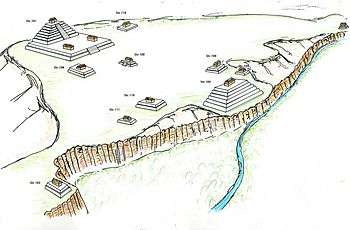Yarumela
Yarumela was one of the sites located in Honduras and based around the Middle Formative era in Mesoamerican history, occupied between 1000 BC and AD 200. It was a popular trade center, especially for precious commodities.
Overview
Yarumela also called Hiarumela, llarumela, yiarumela was an Lenca settlement from the Middle Formative period in Mesoamerica, a period that ran from approximately: 900 BC-300BC. The Lenca are an indigenous people from southwestern Honduras and eastern El Salvador. Yarumela was part of a region the covered around 16,000 square kilometres and shared the region with other archaeological sites such as: La Venta, Los Naranjos, Lo de Vaca and Playa de los Muertos.
Features of Yarumela
Located sixty kilometres south of the Los Naranjos, the site of Yarumela yielded information that led archaeologists to believe that it was another imposing Middle Formative center. This information also led archaeologists to believe that Yarumela as a center had a focus on precious commodities. Much like the settlement found at Los Naranjos, Yarumela’s area was protected by the location in which it was found. On the Eastern side the settlement at Yarumela was protected by the Humuya River, which was a branch off of the Ulua, and on the western side it was protected by a large man made ditch. The settlement at Yarumela was considered to be a large and prosperous trade center; archaeologists determined this from the numerous large structure mounds they found on the site as well as some of the material artifacts located there as well. Artifacts like shells, jadeite, obsidian fragments as well as exotic ceramics.
Trade Route through Yarumela
The settlement of Yarumela covered approximately 74 acres (30 hectares) of territory in the Comayagua Valley and because of its location the site exploited a major passageway between the Pacific Ocean and the Caribbean Seas. This was evidenced by the large among of ornamental shells found at the site, shells that were native to both coastal regions, this paired with the amount of Guatemalan jade and other exotic items found by archaeologists at the site location leads researches to believe that it was indeed a central trade route for the region.
El Cerrito

The site at Yarumela yielded many large structural mounds, including the largest one which reached a height of approximately 19 metres or sixty two feet high, Structure 101, named “El Cerrito”. This was determined to be the ‘main mound’ and was located in the central district of the site. Archaeologists determined that when it was fully functional and maintained the structure was visible from almost any point in the valley where the site was situated. El Cerrito is the main focus/attraction of the site at Yarumela, along with another visible large mound and a reconstructed small step pyramid close to the river opposite the large mounds.
References
Evans, Susan Toby. 2008 Ancient Mexico & Central America Thames & Hudson Ltd. London